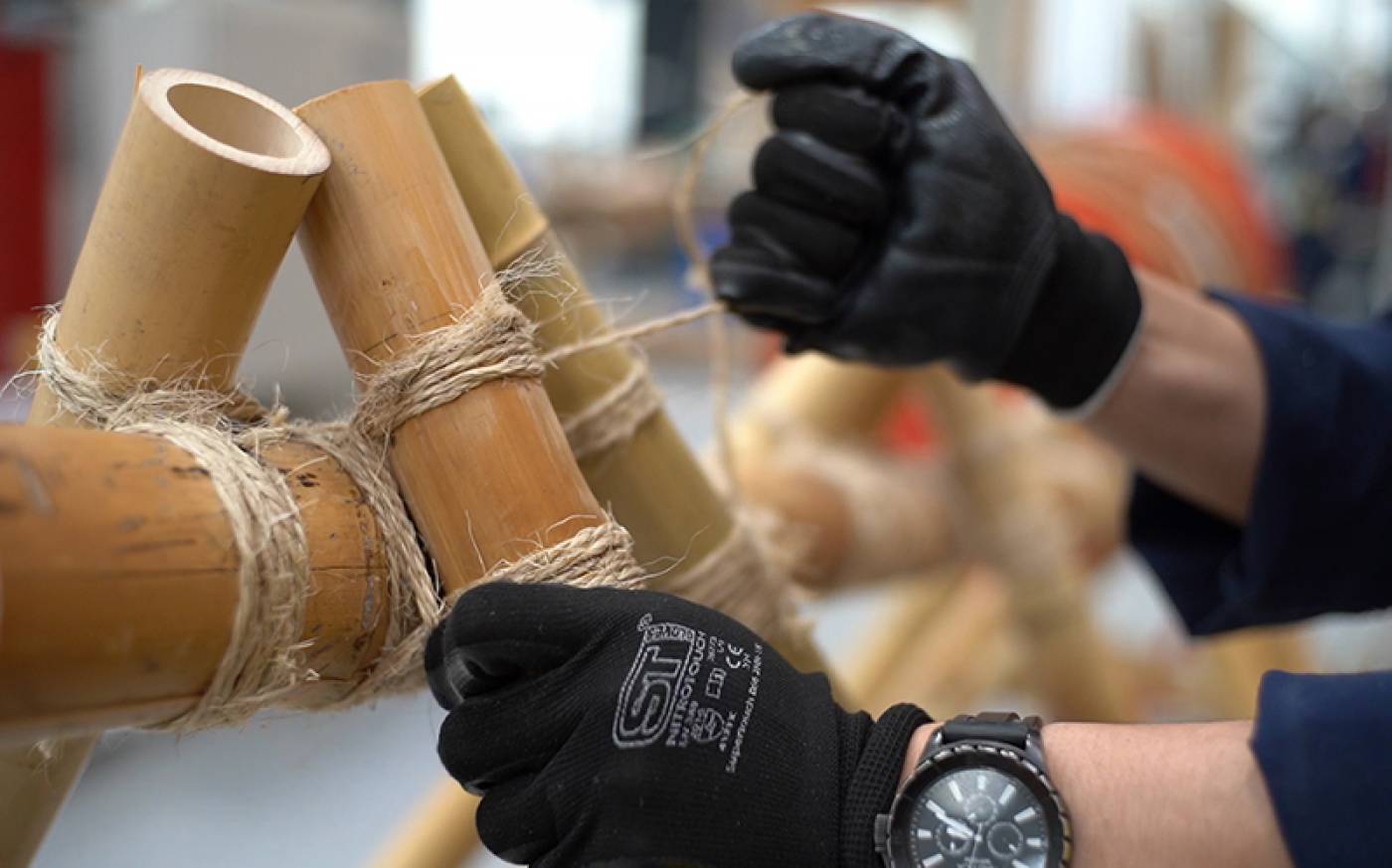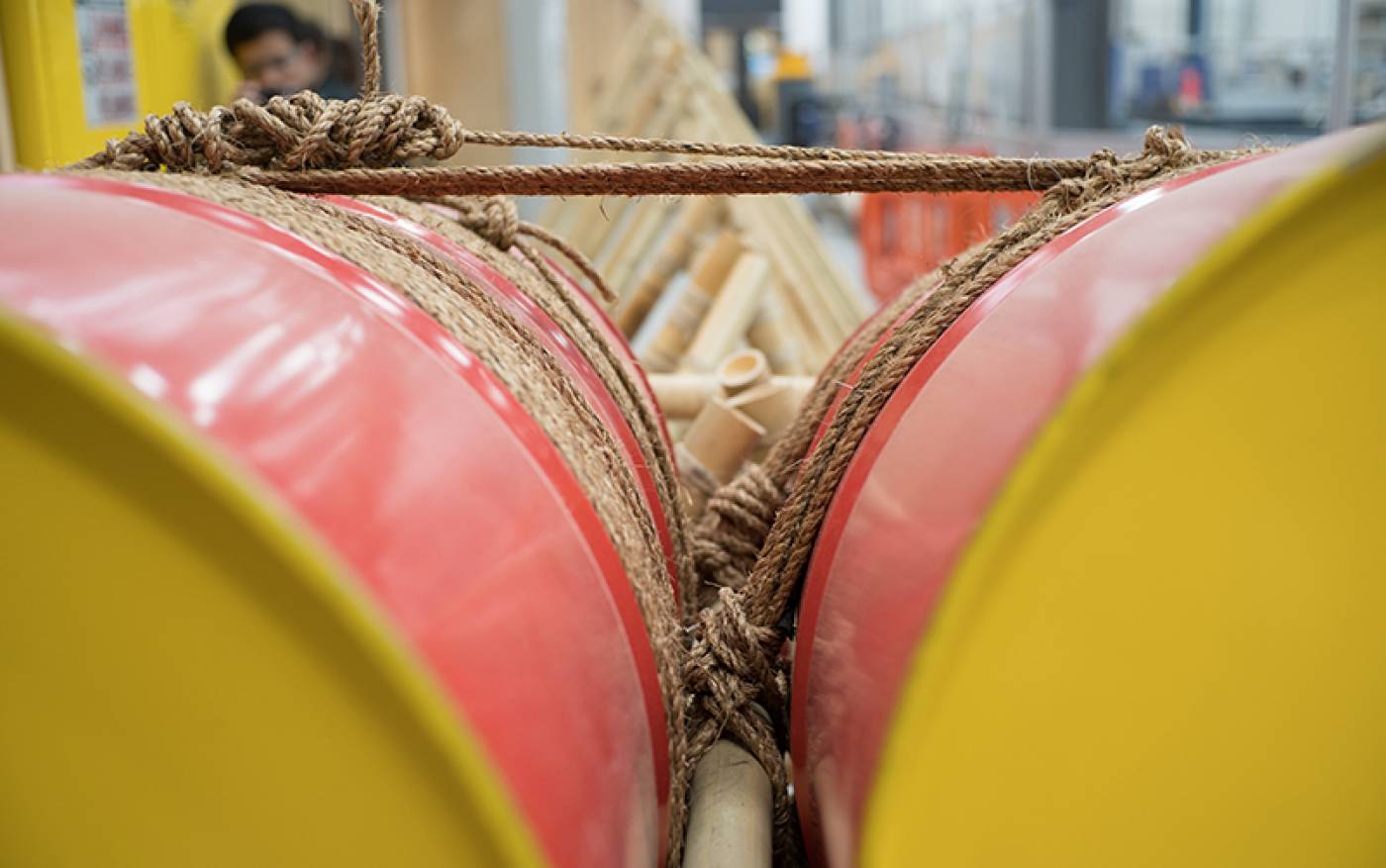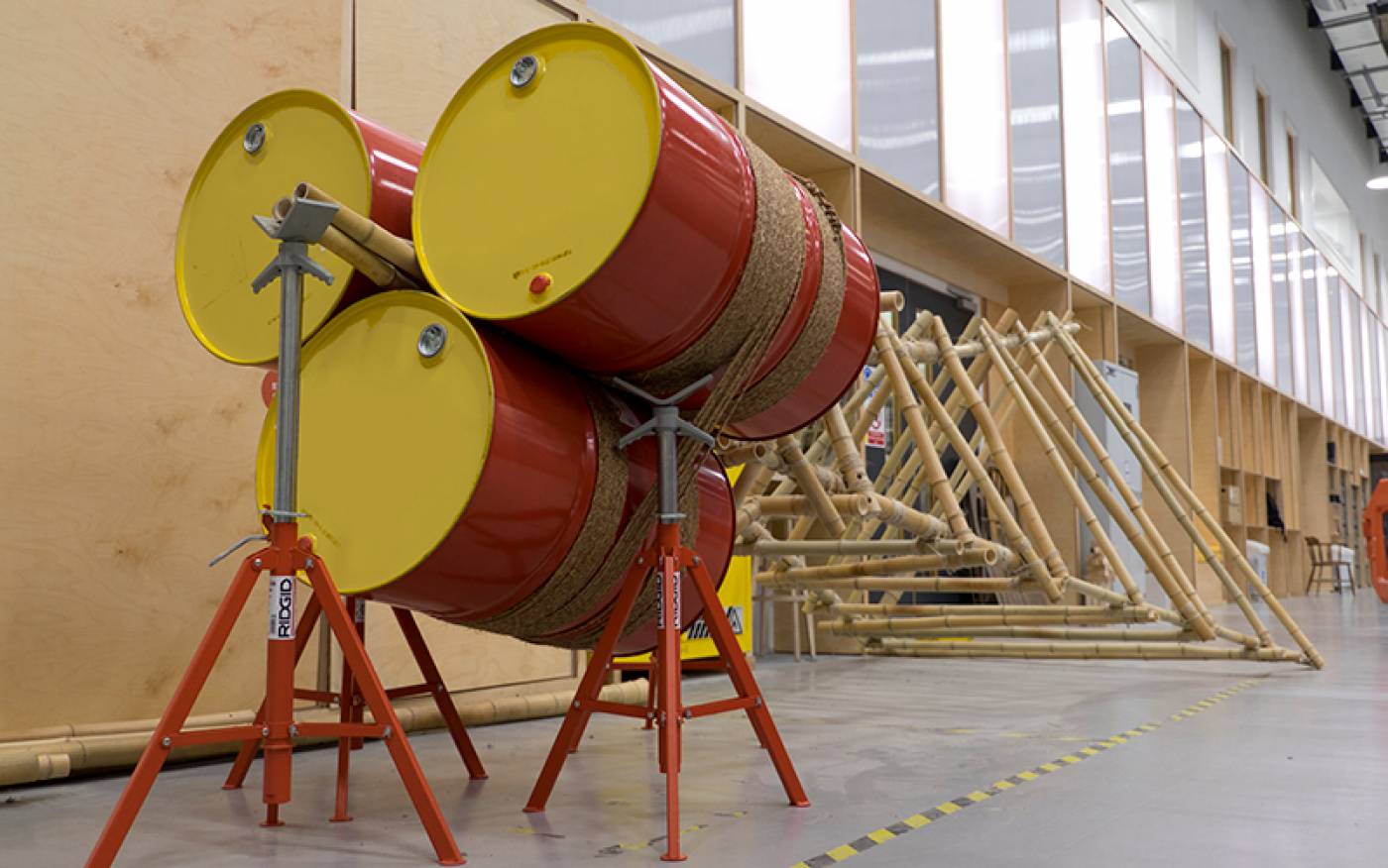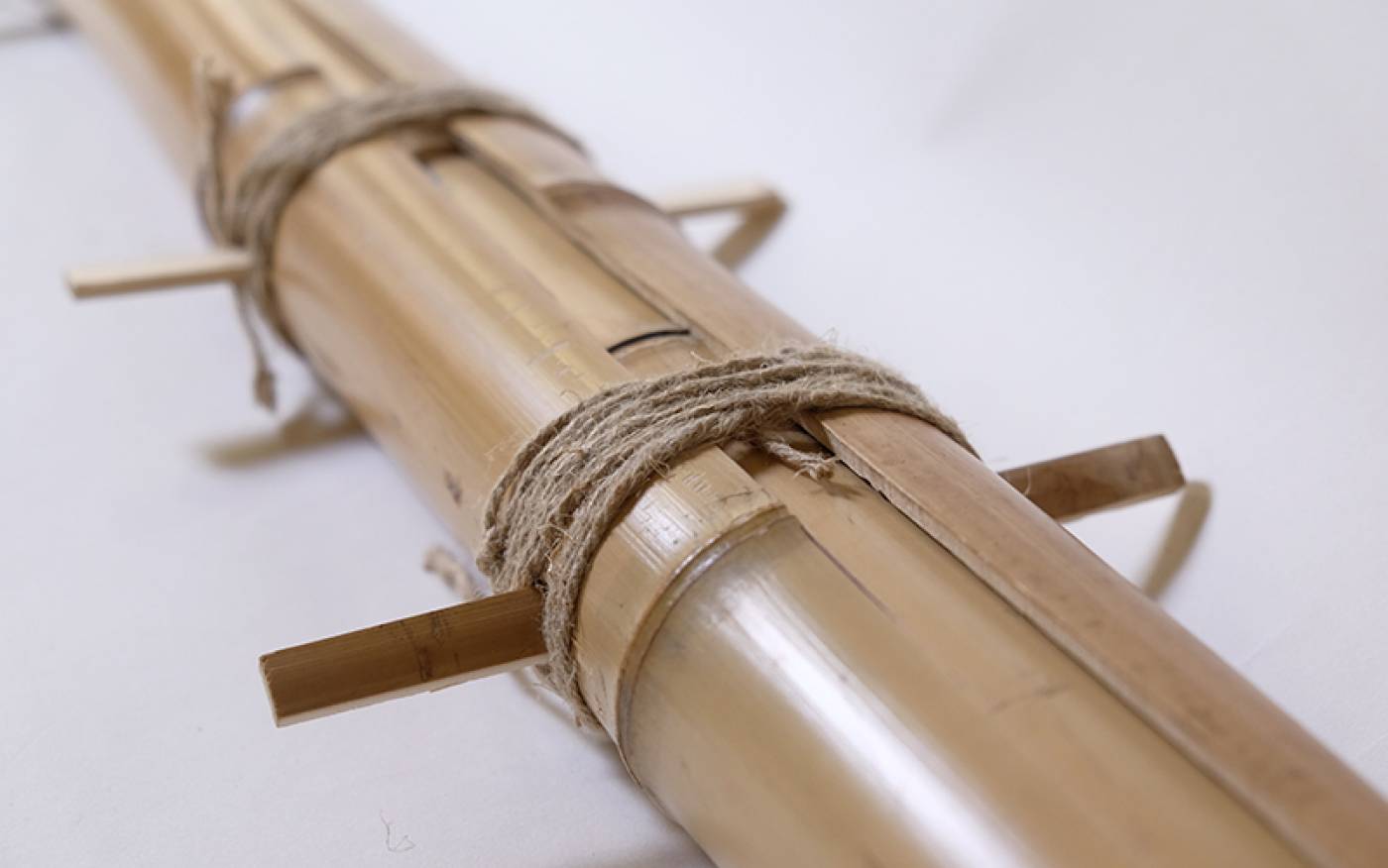Thapanat (Barney) Trewatchatranon, Fariz Uzzaman
In some areas where bamboo is native, it is thought of as a very humble and impermanent building material, mostly due to its heterogeneous makeup and susceptibility to decay and insects. Alternative materials such as concrete, glass, and steel are often preferred for architectural construction. However, the increasing need for sustainable materials in building construction and the extremely fast growth of bamboo has made it a promising choice again.
Bamboo can be harvested roughly six times faster than other common timber species. Increasingly, research into the potential of bamboo is demonstrating that it has excellent mechanical properties and shows promise as an alternative construction material.
Simultaneously, the development of digitisation is altering how the architect and designer interact with materials and manufacturing processes. Inspired by topology optimisation and structural form-finding, this project investigates how to use bamboo as minimally as possible to build a load-bearing structure. It compares the bamboo equations for defining the capacity of the material to finite element analysis (FEA) simulations to create a tool for designing with the material capacity of bamboo.
The Optimised Bamboo Water Tower – conceived here as a post-disaster structure – is used as a test-bed for the simulations as well as for the efficacy of low-tech joinery methods.




- Images
1. Square lashing is a traditional joinery that relied on friction between the rope and bamboo as the material. The number of rounds of the rope on each connection is based on the force shown in finite element analysis.
2. Lashing barrels into the tower: each barrel is tied into one pole to achieve the necessary friction and the three of them are wrapped together to clamp the barrels with the tower.
3. Installing barrels into the tower: steel tripods are used to place the three barrels in the right position before they are tied and wrapped into the tower.
4. Joinery for extending the length of the bamboo pole.
 Close
Close

